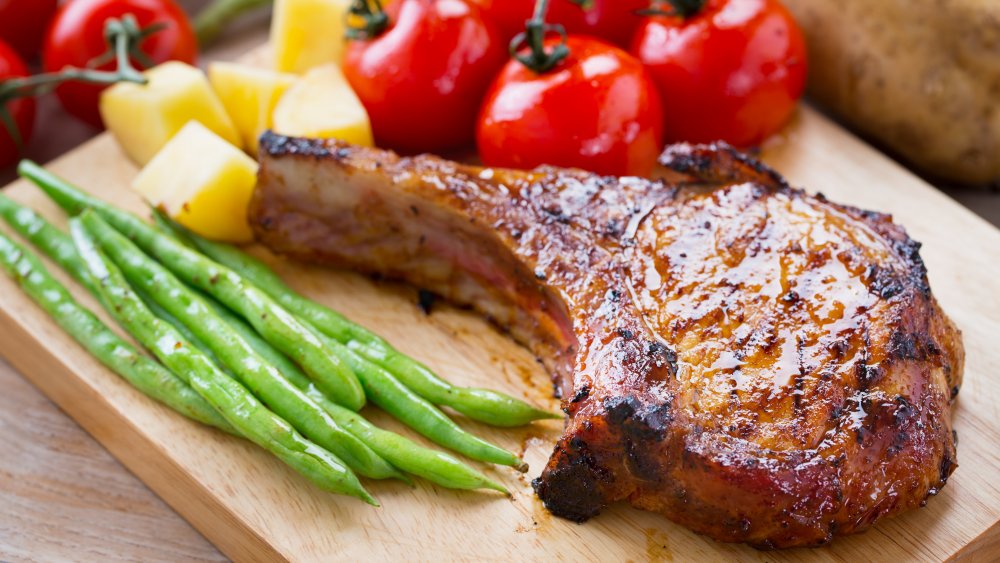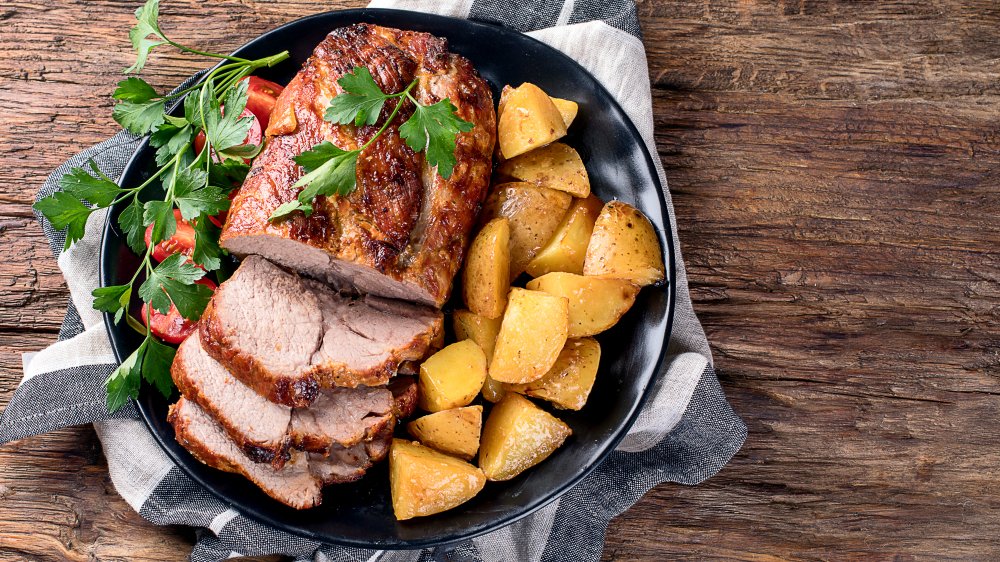Read This Before Eating Pork Chops
It's hard to beat a thick and juicy, bone-in pork chop hot off the grill. Plate it up with a side of cheesy, garlic smashed potatoes and vinegar-kissed coleslaw, and you've got one memorable meal. But pork chops haven't been getting the credit they deserve lately. Remember that promotional campaign about pork being the other white meat? What happened to that?
The Other White Meat campaign launched in order to dispel the myth that pork was a fatty protein, pointing out that a 3-ounce serving of lean pork tenderloin had basically the same amount of fat as a skinless chicken breast (2.98 grams vs. 3.03 grams, respectively), according to the National Pork Board. Just to clear up any confusion early on, pork is, in fact, not a white meat. The USDA classifies pork as red meat because it has more myoglobin than fish or chicken, and because pigs are livestock (via Healthline).
How pork compares to other meats
Lean cuts of pork, such as tenderloin, loin chops, and sirloin roast, are low in fat, high in protein and boast more B vitamins than several other meats, according to Food Network. When comparing 3 ounces of pork tenderloin to the same amount of chicken breast, they both have the same amount of fat (3 grams), but pork tenderloin has fewer calories (96 vs. 142), pork has less cholesterol (48 milligrams vs. 73 milligrams), chicken has more protein (27 grams vs. 18 grams), and both contain healthy B vitamins and selenium (via Food Network).
Some of the fattiest cuts of pork include ribs and pork belly, according to Spruce Eats, so you may want to steer clear of those, and bacon, if avoiding fats. One of the easiest ways to identify a lean cut of pork when shopping is to look for the words "loin" or "chop" in its name. Cuts to look for include: pork tenderloin, sirloin pork chop, sirloin pork roast, New York pork chop, porterhouse chop, ribeye pork chop, pork loin roast. All of these cuts have been shown to be leaner than skinless chicken thigh (via National Pork Board).

